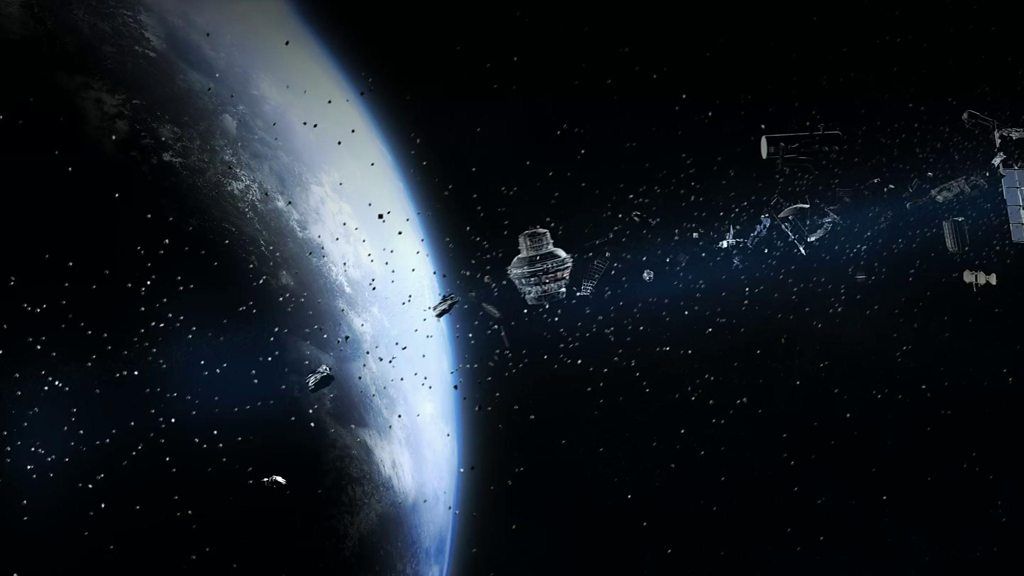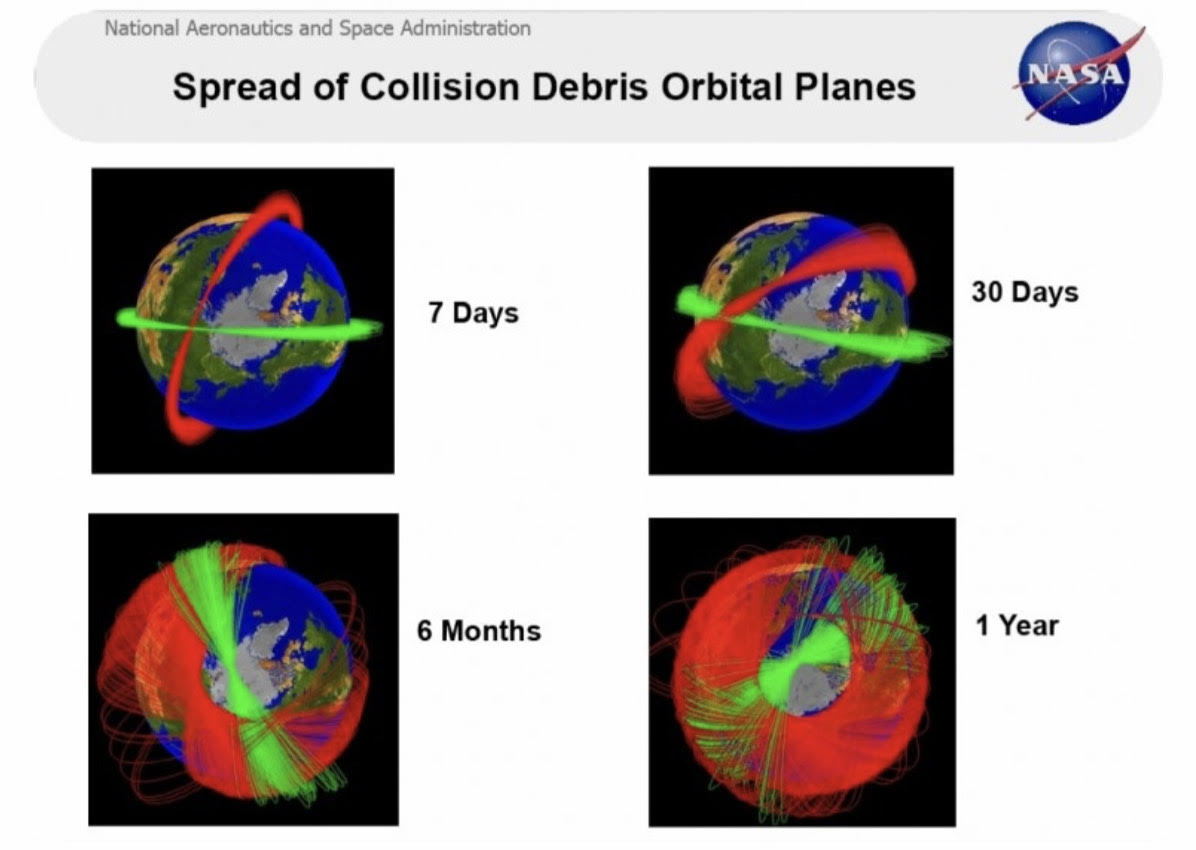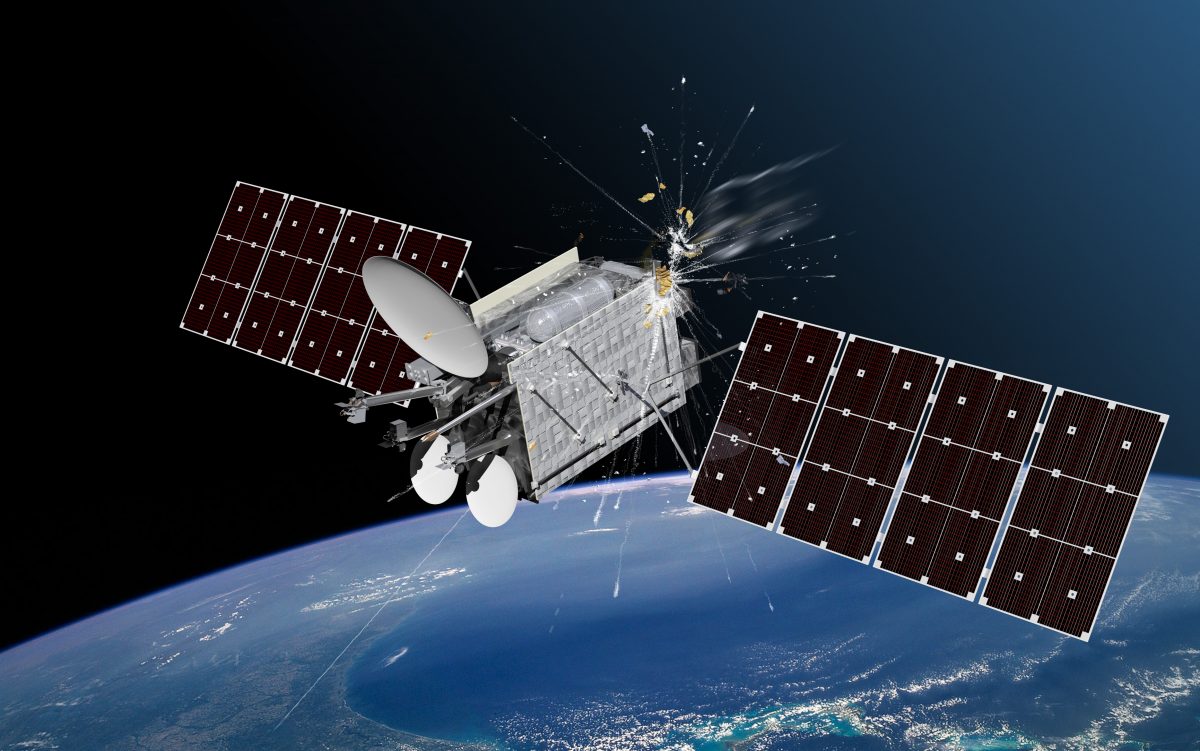
The first rocket launch to put an object into orbit around the earth was in 1957.
In the decades since, satellites have been used to help us access TV networks, weather reports, and use GPS systems that help us get around.
There are just over 2,000 satellites orbiting the earth.
These satellites can fall apart or collide if they cross each other’s orbital path.
In the 60 years since payloads were first launched into space, over 42,000 pieces of debris have been created.
This means that thousands of tonnes of metal fragments are orbiting the earth at about 35,000 kilometers per hour.
But most of the debris is less than one centimeter in diameter, with the biggest pieces ranging from five to ten centimeters, on average.
There are some instances where larger pieces of junk orbit the planet, like the third stage of NASA’s Saturn Five rocket. It weighs about 30,000 pound.

“Most people have heard of Sputnik. But you may not know that sputnik was the second object in the catalog of satellites that we keep,” said Jonathan McDowell, of the Harvard Smithsonian Center for Astrophysics, during a lecture in 2017.
“The first object was the rocket-stage that put it in to orbit because when you launch a satellite with a rocket, the rocket stage has to go into orbit to get the satellite into orbit,” he said.
So, the first orbital space launch had a big piece of space junk,” he added.
The rocket-stage that launched Sputnik landed back on earth a few months later.
Leaving junk behind has long been part of space exploration.
In 2013, the risk of a debris collision in space ranged from 50 to 67 percent.
That’s equal to a satellite crash every two years.
SpaceX, a private company owned by Elon Musk, has made space exploration a priority.
The firm has launched several versions of re-usable rockets, while providing a taxi-service for cargo and passengers from earth to the International Space Station.
SpaceX has also launched over 240 satellites since January 2020.
These are used in conjunction with their Starlink program which would promote global internet coverage by using a network of satellites.
“I think once commercial companies start losing more of their satellites due to collisions, they’ll get to a tipping point where they get more serious about this,” said McDowell.
The European Space Agency (ESA) has announced an trial project to clean up some pieces of space junk by 2025.
This kind of effort has never been attempted and could open a market for recycled debris and satellite parts.

“The space debris issue is more pressing than ever before. Today we have nearly 2,000 live satellites and more than 3,000 failed ones,” said Luc Piguet, CEO of ClearSpace, in a statement published by the ESA.
ClearSpace is a private Swiss company hired by the ESA to lead the clean-up mission in 2025.
They will be aiming to recover one of the stages of the Vespa rocket (Vega Secondary Payload Adapter). Vespa weighs about 220 pounds.
This trial clean-up is helping to create the technology we will need to clear the junk that remains in orbit.
But as human activity in space increases, debris will continue to orbit the earth unless more is done.

